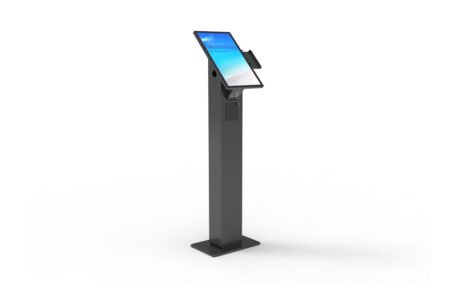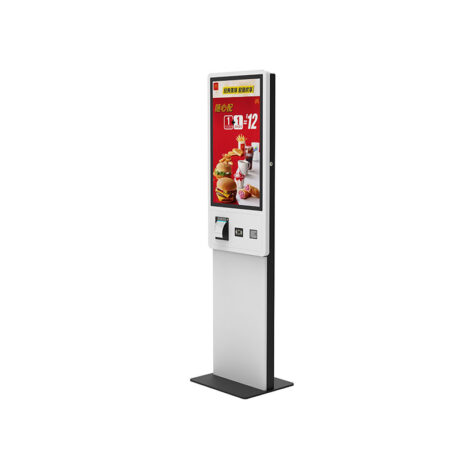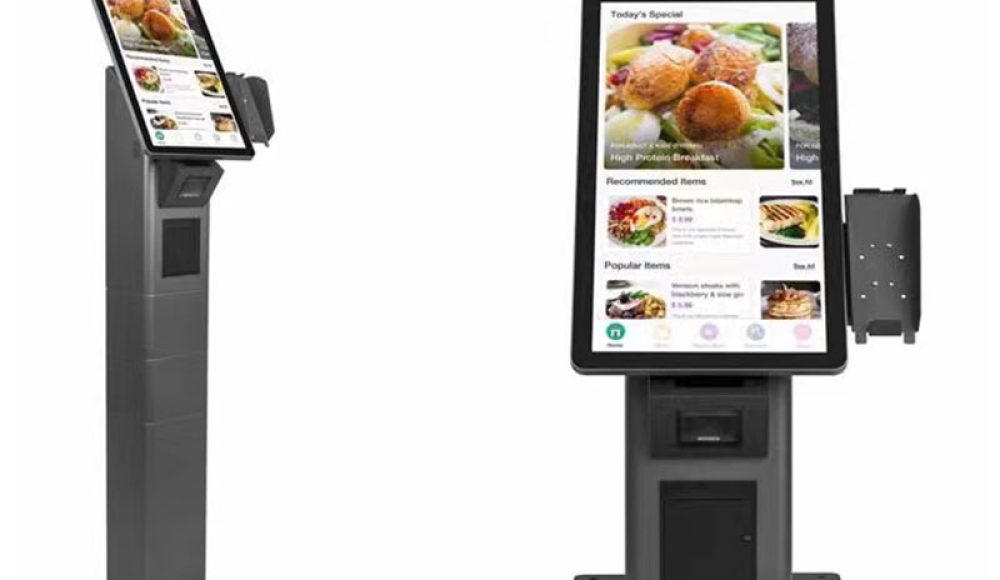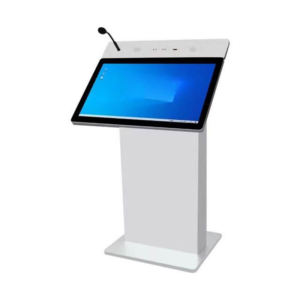In today’s fast-paced world, businesses are continually looking for innovative ways to enhance customer service, streamline operations, and improve efficiency. One of the most transformative tools that have emerged in recent years is the POS-enabled self-service kiosk. These advanced kiosks are changing the way customers interact with businesses, providing seamless experiences that benefit both consumers and companies. In this article, we’ll explore the many advantages of integrating POS-enabled self-service kiosks into your business and how they can help optimize your customer service.

What Is a POS-Enabled Self-Service Kiosk?
A POS-enabled self-service kiosk is a self-contained digital station that combines Point-of-Sale (POS) functionality with customer-facing features. These kiosks allow customers to browse products or services, place orders, make payments, and even check out, all without the need for direct human interaction. In essence, they function as a fully automated sales assistant, streamlining the purchasing process.
Key Benefits of POS-Enabled Self-Service Kiosks
1. Faster Transactions
One of the most significant advantages of POS-enabled self-service kiosks is that they drastically reduce wait times. Customers can place their orders and make payments quickly, allowing businesses to serve more people in less time. For high-traffic locations, such as fast-food chains or retail stores, this speed can lead to significantly reduced lines and happier customers.
2. Improved Customer Experience
The POS-enabled self-service kiosk empowers customers by giving them control over their shopping experience. They can browse through products, customize orders, and finalize transactions at their own pace. This level of autonomy creates a more satisfying shopping experience, as customers can avoid the pressure and delays that often come with traditional cashier-assisted purchases.
3. Reduced Human Error
Since the POS-enabled self-service kiosk is automated, it minimizes the likelihood of human error in order-taking, billing, or payments. This leads to fewer discrepancies in transactions and reduces the number of customer complaints related to mistakes made by staff.
4. Cost Efficiency
Although there is an upfront cost involved in installing POS-enabled self-service kiosks, businesses can save money in the long term. These kiosks can handle multiple functions—such as order-taking, payment processing, and receipt printing—without the need for additional staff members. This can lead to labor cost savings and increased productivity.
5. 24/7 Availability
POS-enabled self-service kiosks can be available for use 24/7, especially in locations like airports, hospitals, or convenience stores. This round-the-clock availability ensures that customers can make purchases, place orders, or complete transactions at any time, offering ultimate convenience.
6. Enhanced Customer Data Collection
Modern POS-enabled self-service kiosks are equipped to collect valuable customer data. From purchasing patterns to preferences, businesses can use this data to gain insights into consumer behavior, personalize marketing strategies, and make data-driven decisions to improve service.
7. Multi-Language Support
In locations with diverse customer bases, POS-enabled self-service kiosks often come equipped with multi-language support, making it easy for people from different linguistic backgrounds to interact with the kiosk. This inclusion increases accessibility and ensures a seamless experience for all customers.

How to Integrate POS-Enabled Self-Service Kiosks Into Your Business
Step 1: Assess Your Needs
Before integrating POS-enabled self-service kiosks, it’s important to assess the specific needs of your business. Are you a retail store looking to speed up checkout? A restaurant trying to reduce wait times? Or perhaps an airport aiming to provide quick and easy ticketing? Identifying your goals will guide the kiosk setup and customization process.
Step 2: Choose the Right Kiosk Model
There are many different types of POS-enabled self-service kiosks, so selecting the right one for your business is crucial. Consider factors such as screen size, durability, ease of use, payment options, and integration capabilities with your existing POS system.
Step 3: Integration with Existing Systems
One of the key elements of a successful kiosk implementation is ensuring that it integrates seamlessly with your current systems, such as inventory management and payment processing. Make sure your POS-enabled self-service kiosks can sync with your existing databases to provide accurate pricing, stock information, and customer records.
Step 4: Staff Training
Even though the kiosks are designed for self-service, it’s important to train your staff to assist customers when needed. Provide training on how to troubleshoot issues with the kiosks, handle payments, and offer customer support.
Step 5: Monitor and Optimize
After the installation of POS-enabled self-service kiosks, it’s essential to monitor their performance. Track customer feedback, usage statistics, and transaction data to identify any potential issues and areas for improvement. Regular software updates and maintenance are also crucial to ensure the kiosks continue running smoothly.

Conclusion
Integrating POS-enabled self-service kiosks into your business can significantly optimize customer service by offering faster, more convenient, and more efficient transaction processes. These kiosks not only enhance the customer experience but also help businesses reduce operational costs, minimize human error, and collect valuable customer data. With the right setup and ongoing optimization, POS-enabled self-service kiosks can become a game-changing tool for improving customer satisfaction and driving business success.
By investing in POS-enabled self-service kiosks, businesses can stay ahead of the competition, increase operational efficiency, and meet the evolving demands of today’s tech-savvy consumers.



